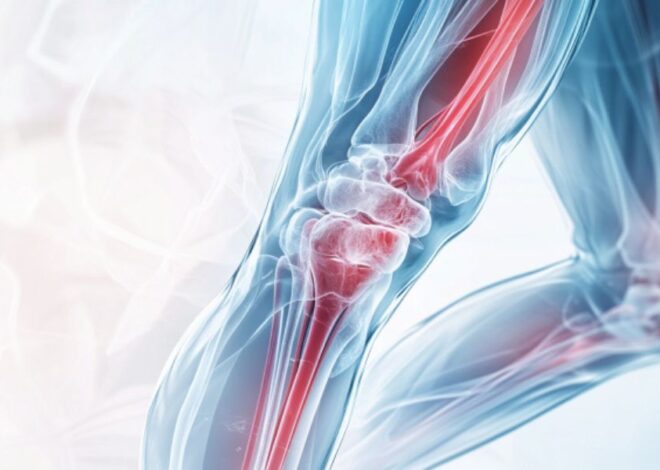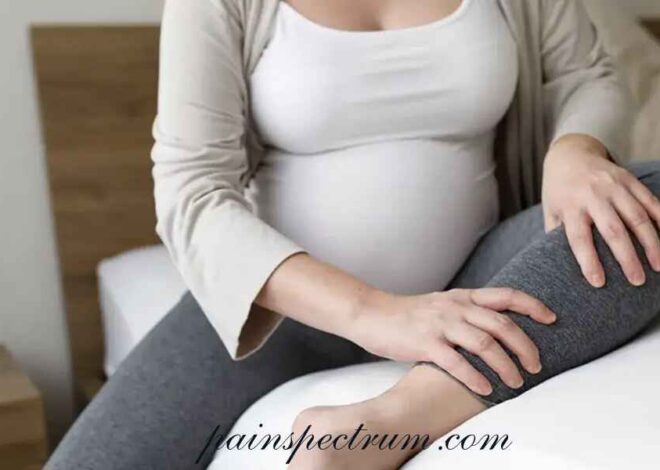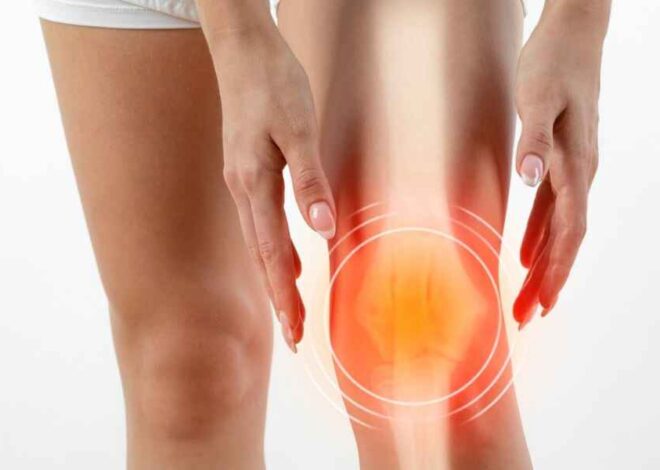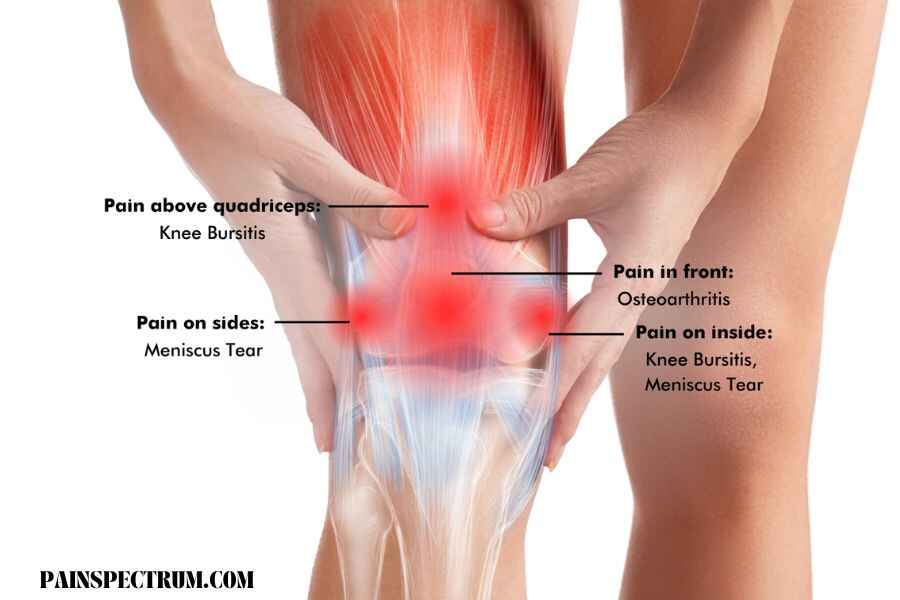
5 Knee Pain Location Chart Best Guide
Last updated on December 12th, 2025 at 08:24 am
A knee pain location chart is a visual guide that helps you see exactly where your knee hurts. It shows different parts of the knee joint and nearby structures, highlighting common areas of discomfort like the front, back, sides, or inside of the knee. Understanding this chart is important because it helps you and your healthcare provider pinpoint the source of your pain and decide on the best treatment.
knee pain postpartum
Table of Contents
Understanding Different Knee Pain Location Charts
Understanding the exact location of your knee pain is very important for several reasons. It helps you communicate effectively with your doctor about your symptoms, which is crucial for getting an accurate diagnosis. Different parts of the knee can be affected by various conditions like ligament injuries, meniscus tears, arthritis, or patellar tendinitis. Understanding where your pain is located also helps you learn more about what might be causing it and how to manage or prevent further discomfort.
Overview of Knee Joint Structure
The knee joint is one of the biggest and most complex joints in our body. It includes three main bones: the femur (thigh bone), tibia (shin bone), and patella (kneecap). Ligaments, which are strong bands of tissue, connect these bones and help keep the knee stable.
The main ligaments are the ACL and PCL (cruciate ligaments) and the MCL and LCL (collateral ligaments). Tendons connect muscles to bones around the knee, allowing movement. For example, the patellar tendon connects the quadriceps muscles to the tibia.
Cartilage, which is smooth and slippery, covers the ends of the bones in the knee joint, providing cushioning and enabling smooth movement. The menisci, which are cartilage structures, act as shock absorbers between the femur and tibia.
Functions of Different Knee Joint Components
Each part of the knee joint has an important job. The bones give the knee structure and provide places for muscles and ligaments to attach. Ligaments keep the knee stable and stop it from moving too much in the wrong direction. Tendons connect muscles to bones, allowing the knee to bend and straighten. Cartilage absorbs shock and reduces friction, helping the knee move smoothly. Knowing these basics about the knee helps us understand where knee pain can come from and why certain areas might get hurt.
Types of Knee Pain
Knee pain can feel different depending on where it hurts and how bad it is. You might feel pain around the kneecap, behind the knee, on the sides, or deep inside the joint. Knowing what type of knee pain you have helps in finding the right treatment. Here are the different types of knee pain:
- Anterior Knee Pain: Pain at the front of the knee, usually around or behind the kneecap.
- Posterior Knee Pain: Pain behind the knee, which might be caused by problems like a Baker’s cyst or hamstring tendonitis.
- Medial Knee Pain: Pain on the inner side of the knee, often due to injuries to the medial collateral ligament (MCL) or medial meniscus.
- Lateral Knee Pain: Pain on the outer side of the knee, usually from injuries to the lateral collateral ligament (LCL) or lateral meniscus.
- Generalized Knee Pain: Pain that spreads throughout the knee joint, often because of conditions like osteoarthritis or rheumatoid arthritis.
Common Knee Problems
Quadriceps or Hamstring Tendinitis: Tendinitis happens when the tendons that connect your thigh muscles (quadriceps and hamstrings) to the bones become swollen and painful.
Arthritis: Knee arthritis happens when the smooth tissue (cartilage) that cushions your knee joint wears away.
Bursitis: Knee bursitis happens when small fluid-filled sacs (bursae) in your knee become swollen and painful. These sacs are located between your muscles, bones, and tendons.
Pain at the Kneecap
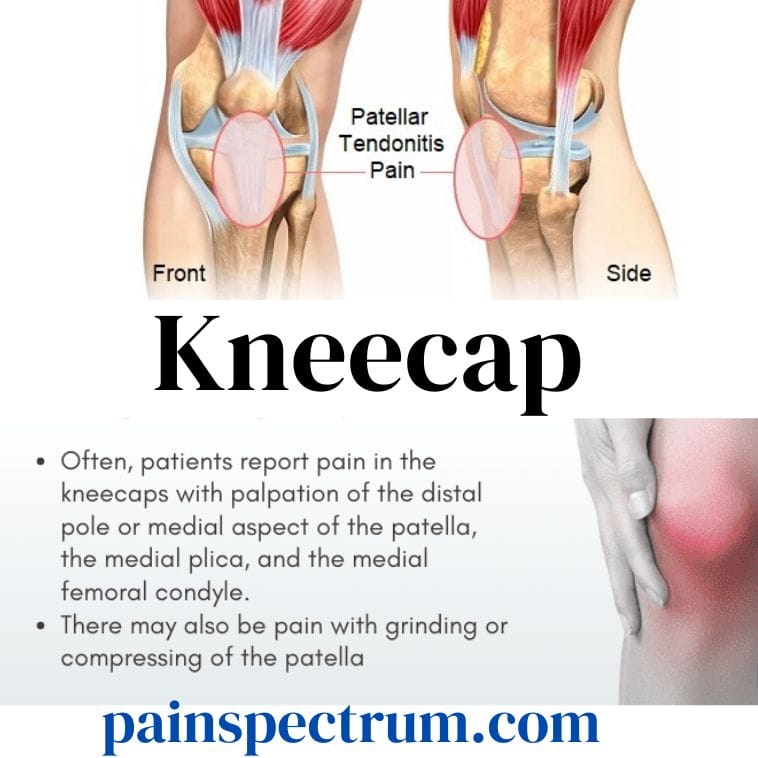
The kneecap, or patella, is the bone that covers your knee joint. Pain in this area is often called a runner’s knee. Here are the common causes:
- Patellofemoral Syndrome: This happens when you overuse your knee joint, like starting a new workout routine too quickly.
- Chondromalacia Patellae: This is the wear and tear of the cartilage that covers your kneecap.
- Patellar Tracking Disorder: This occurs when your kneecap isn’t aligned properly.
- Patellar Instability: Also called patellar subluxation, this is a partial dislocation of your kneecap.
- Hoffa’s Fat Pad Impingement: This affects a layer of fatty tissue just under your kneecap.
- Patella Stress Fracture: This is a small crack in the patella that stays in place.
- Patellofemoral Osteoarthritis: This type of arthritis affects the underside of the kneecap and the groove in the thigh bone where the kneecap sits.
Front Knee Pain Location Chart (Anterior Knee Pain)
Front knee pain, also known as anterior knee pain, is felt around or behind the kneecap (patella). It can vary from mild discomfort to severe pain, especially during activities like climbing stairs, kneeling, or running.

Anterior knee pain can be caused by:
- Patellofemoral Pain Syndrome (pain around or behind the kneecap).
- Patellar Tendinitis (inflammation of the tendon connecting the kneecap to the shinbone).
- Chondromalacia Patellae (cartilage under the kneecap softens).
- Overuse from activities like running or squatting.
- Muscle imbalances or poor biomechanics.
- Direct knee trauma.
Inner Knee Pain Location Chart (Medial Knee Pain)
Inner knee pain, also known as medial knee pain, is located on the inner side of the knee joint. It typically occurs along the inner edge of the knee where the femur (thigh bone) and tibia (shin bone) meet.
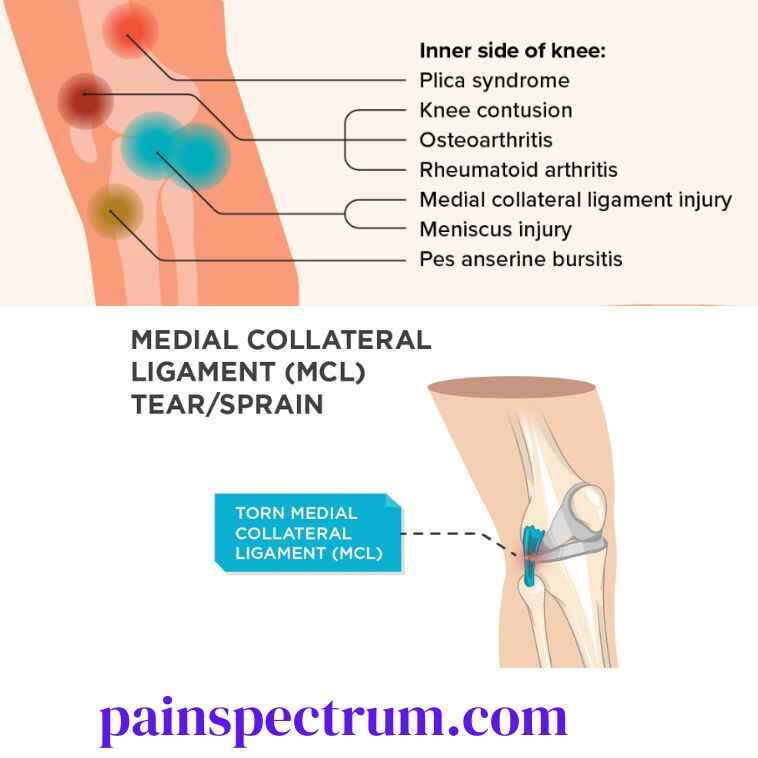
Common Causes
- MCL Injury: A ligament inside your knee that can be injured from twisting or a direct hit to the knee.
- Medial Meniscus Tear: A tear in the meniscus, a cartilage structure in the knee, often caused by twisting or squatting motions.
- Pes Anserine Bursitis: Swelling of a small fluid-filled sac near the knee, typically due to overuse or tight muscles.
- Osteoarthritis: Degeneration of the knee joint over time, leading to pain and stiffness.
- IT Band Syndrome: Though typically felt on the outside of the knee, it can also cause inner knee pain due to the mechanics of knee movement.
- Patellofemoral Pain Syndrome: Generally felt in the front of the knee but can sometimes cause diffuse pain around the knee.
Outer Knee Pain Location Chart (Lateral Knee Pain)
Outer knee pain, or lateral knee pain, is felt on the outer side of the knee joint. It typically occurs along the outer edge of the knee where the femur and tibia meet.
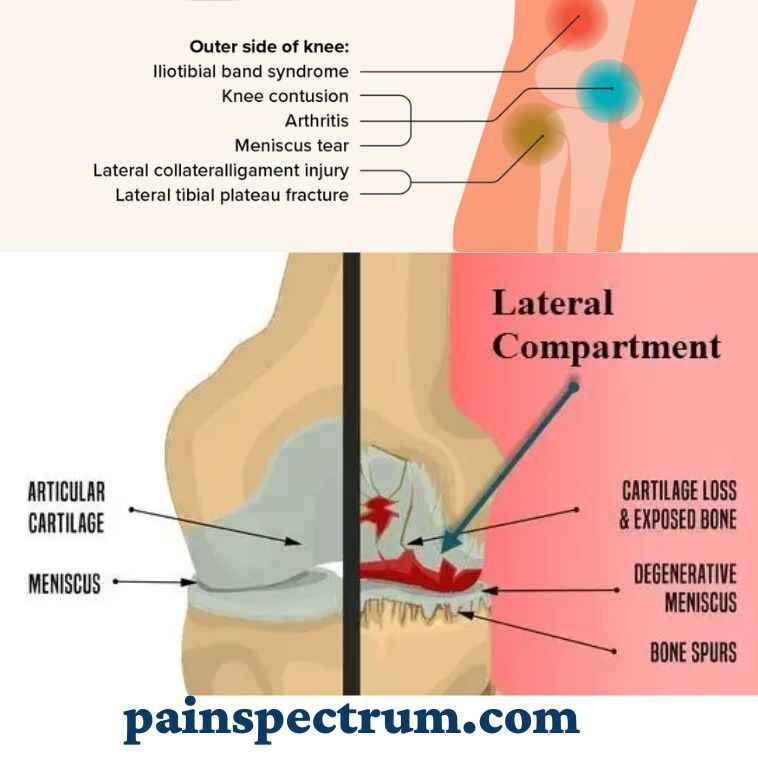
Common Causes
- Iliotibial Band Syndrome (ITBS): This is when the band on the outer thigh gets irritated from overuse, often seen in runners or cyclists.
- Lateral Collateral Ligament (LCL) Injury: This ligament on the outer side of your knee can get strained or torn from sudden movements or impacts.
- Lateral Meniscus Tear: The cartilage in your knee can tear on the outer side, causing pain when you twist or bend your knee.
- Bursitis: Fluid-filled sacs near your knee can get swollen and painful, especially on the outer side.
- Iliotibial Band Friction Syndrome: When the band on your thigh rubs against your knee bone too much, it can get sore and painful.
- Patellar Tendonitis (Runner’s Knee): Inflammation of the tendon that connects your kneecap to your shinbone can cause pain around the knee.
- Osteoarthritis: This is when your knee joint wears down over time, causing pain and stiffness.
If you have ongoing or worsening pain on the outer side of your knee, it’s best to see a doctor.
Back of Knee Pain Location Chart (Posterior Knee Pain)
Back knee pain, or posterior knee pain, is located at the back of the knee joint. It can occur deep within the knee or just under the skin.

Common Causes
- Hamstring Injury: This is when the muscles at the back of your thigh get strained or torn.
- Popliteal Cyst (Baker’s Cyst): It’s a swelling filled with fluid at the back of your knee, which can cause discomfort.
- Meniscus Tear: Small pieces of cartilage in your knee can tear due to injury or wear and tear.
- Bursitis: This happens when small fluid sacs near your knee get inflamed.
- Tendonitis: It’s inflammation of the tendons (which connect muscles to bones) around your knee.
- Overuse or Repetitive Strain: Doing activities that bend your knee a lot, like running downhill or cycling, can lead to pain in the back of your knee.
- Posterior Cruciate Ligament (PCL) Injury: This ligament inside your knee can get injured, causing pain in the back part of your knee.
- Osteoarthritis: This is a type of arthritis that can affect any part of your knee joint, causing pain and stiffness.
To find out what’s causing your pain and how to treat it, it’s best to see a doctor or physical therapist. They can check your knee, maybe do some tests like X-rays or MRI scans, and then suggest ways to help you feel better.
Pain Below the Knee
Pain below the knee can happen for a few reasons. One is patellar tendinitis, also known as Jumper’s knee when the tendon connecting the kneecap to the shinbone gets injured. Another cause is Osgood-Schlatter disease, which affects kids during growth spurts, causing swelling where the kneecap tendon attaches to the shinbone.
Osteochondritis dissecans (OCD) is another condition that can lead to knee pain. It happens when a bone loses its blood supply, which damages the bone and cartilage.
Lastly, Sinding-Larsen-Johansson syndrome, common in children, causes inflammation from overusing the patellar tendon. These conditions can all result in discomfort and may need different treatments depending on the cause.
When to Seek Medical Advice
If your knee hurts a lot and makes it hard to move or put weight on it, or if it swells up, feels warm, or turns red, you should see a doctor. Feeling like your knee might give out or that it can’t hold you up properly is also a reason to seek medical advice.
If your knee pops or feels like it locks when you move it, that’s another sign you should get checked out. And if you have a fever along with any of these symptoms, it could mean there’s an infection that needs medical attention.
Red Flags to Watch Out For: Signs You Should See a Doctor
Certain symptoms could mean something serious is going on with your knee and you should see a doctor right away. If you suddenly feel a lot of pain, especially after a fall, injury, or sudden turn, it’s important to get medical help.
Difficulty bending or straightening your knee fully is another sign that needs attention. If you feel numbness or tingling, especially in your leg or foot, or notice a lot of bruising without any obvious cause, these are also reasons to see a healthcare provider promptly.
Diagnosis of Knee Pain
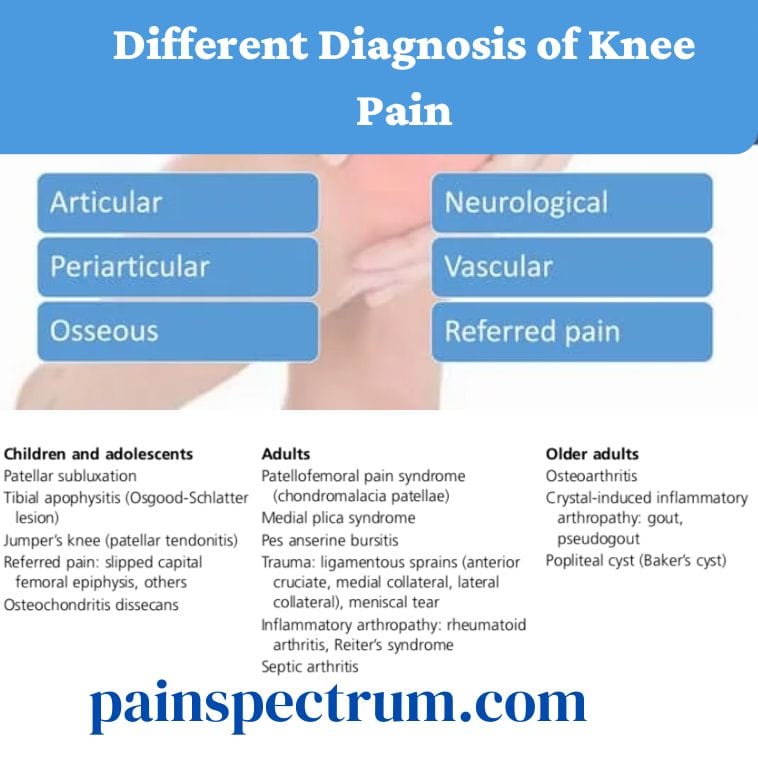
To find out what’s causing your knee pain, doctors use different methods:
- Physical Examination: Your doctor will check how well your knee moves, if it feels stable, and where it’s tender to touch. This helps them understand what’s causing your pain.
- Imaging Tests: X-rays can show if there are fractures or arthritis in your knee. MRI scans give detailed pictures of soft tissues like ligaments and cartilage.
- Diagnostic Injections: Sometimes, injecting medicine to numb specific areas around your knee can help doctors find out where the pain is coming from.
Treatment Options for Knee Pain
General Treatment Strategies
For mild to moderate knee pain, initial treatment often includes:
- RICE Method: Rest, Ice, Compression, and Elevation to reduce swelling and pain.
- Pain Relief Medications: Over-the-counter pain relievers such as ibuprofen or acetaminophen.
- Physical Therapy: Exercises to strengthen muscles around the knee and improve flexibility.
Specific Treatments for Different Knee Pain Conditions
- Patellofemoral Pain Syndrome: Do exercises to make your thigh muscles stronger and help your knee move better.
- Meniscus Tear: Rest, do exercises, or have surgery to fix or remove the damaged part, depending on how bad it is.
- Arthritis: Take medicine to reduce swelling, get injections to help the joint move smoothly, or have surgery if the arthritis is very bad.
Prevention of Knee Pain
Tips for Preventing Knee Pain Based on Location:
- Maintaining Healthy Weight: Reduces stress on knee joints.
- Regular Exercise: Strengthens muscles around the knee for better support.
- Proper Techniques: Using correct form during physical activities to avoid strain.
- Wearing Appropriate Footwear: Provides adequate support and cushioning.
- Avoiding Overuse: Alternate activities and take breaks to prevent repetitive stress injuries.
Importance of Exercise and Maintaining Knee Health
Regular exercise, particularly activities that strengthen the quadriceps, hamstrings, and calf muscles, helps maintain knee stability and flexibility. It also supports overall joint health by improving circulation and reducing stiffness.
FAQs
1. Where does knee pain usually happen?
Knee pain in different spots around the knee joint, depending on what’s causing it:
- Front of the knee: This is common with conditions like runner’s knee, where the pain is around the kneecap.
- Inside of the knee: Pain here could be from issues like arthritis or a torn meniscus.
- Outside of the knee: This might be due to problems with ligaments or tendons.
- Back of the knee: Pain here can be from injuries to ligaments or conditions like a Baker’s cyst.
2. Where does knee ligament pain occur?
Knee ligament pain happens when the ligaments that hold the knee together get hurt. It can be in specific places:
- ACL (Anterior Cruciate Ligament): Deep inside the knee, often feels unstable.
- PCL (Posterior Cruciate Ligament): At the back of the knee, might feel weak.
- MCL (Medial Collateral Ligament): On the inner side of the knee.
- LCL (Lateral Collateral Ligament): On the outer side of the knee.
3. Where does knee pain come from?
Knee pain can show up in different parts of the knee and nearby areas:
- Around the kneecap (patella): Common with issues like tendinitis or pain syndrome.
- Inside the knee joint: This can be from problems like a torn meniscus or arthritis.
- Along the sides of the knee: This might be due to injuries to ligaments or conditions like iliotibial band syndrome.
- At the back of the knee: Seen with injuries to ligaments, a Baker’s cyst, or problems with tendons.
Conclusion
Knee pain can significantly impact your daily life, but understanding the specific location and underlying causes is crucial for effective treatment. Different areas of the knee—such as the front, back, inner, and outer sides—can indicate various conditions like ligament injuries, tendinitis, or arthritis. Using a knee pain location chart can help you and your healthcare provider accurately diagnose and treat your pain.
Proper management involves rest, targeted exercises, and appropriate medical interventions, depending on the severity and cause of the pain. Preventative measures, including maintaining a healthy weight, exercising regularly, and using correct techniques during physical activities, are essential to keep your knees healthy and pain-free.
By recognizing the signs early and seeking timely medical advice, you can take proactive steps to manage knee pain and maintain an active, healthy lifestyle. UnderstKnee pain location chart: Sites of different injuries and your knee pain not only aid in recovery but also empower you to prevent future discomfort, ensuring long-term joint health.
References:
Knee Pain Location Chart: What Knee Pain May Indicate https://www.healthline.com/health/knee-pain-location-chart
Knee Pain (Top, Inner, or Back) Location Chart https://www.verywellhealth.com/sources-of-knee-pain-normal-joint-diagram-189258
Knee pain location chart: Sites of different injuries https://www.medicalnewstoday.com/articles/knee-pain-location-chart
